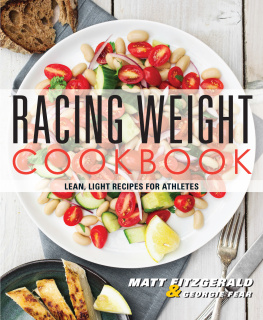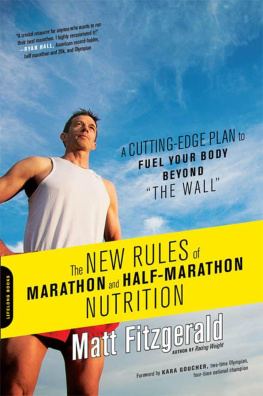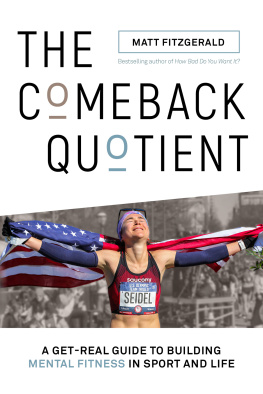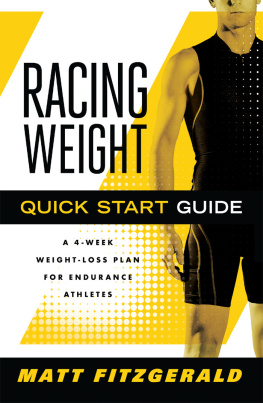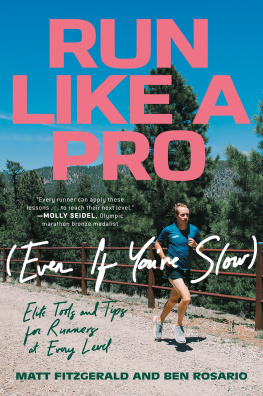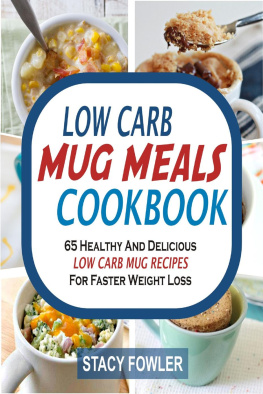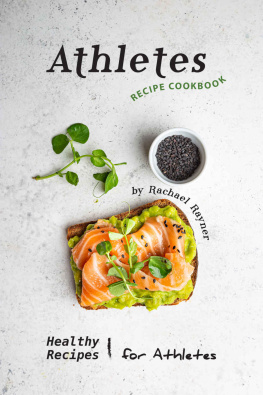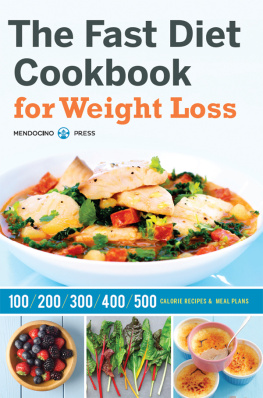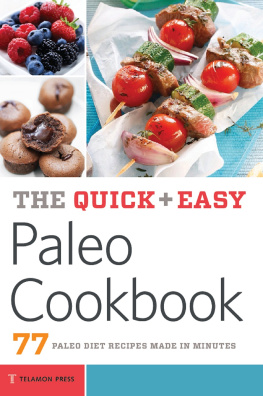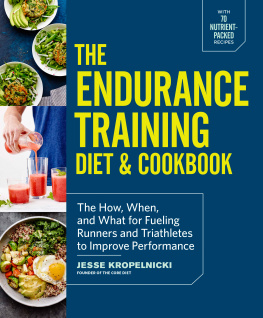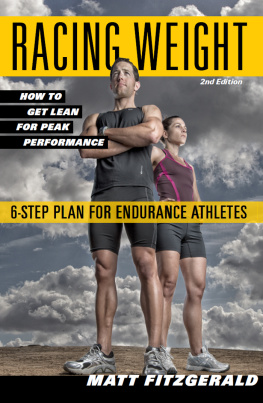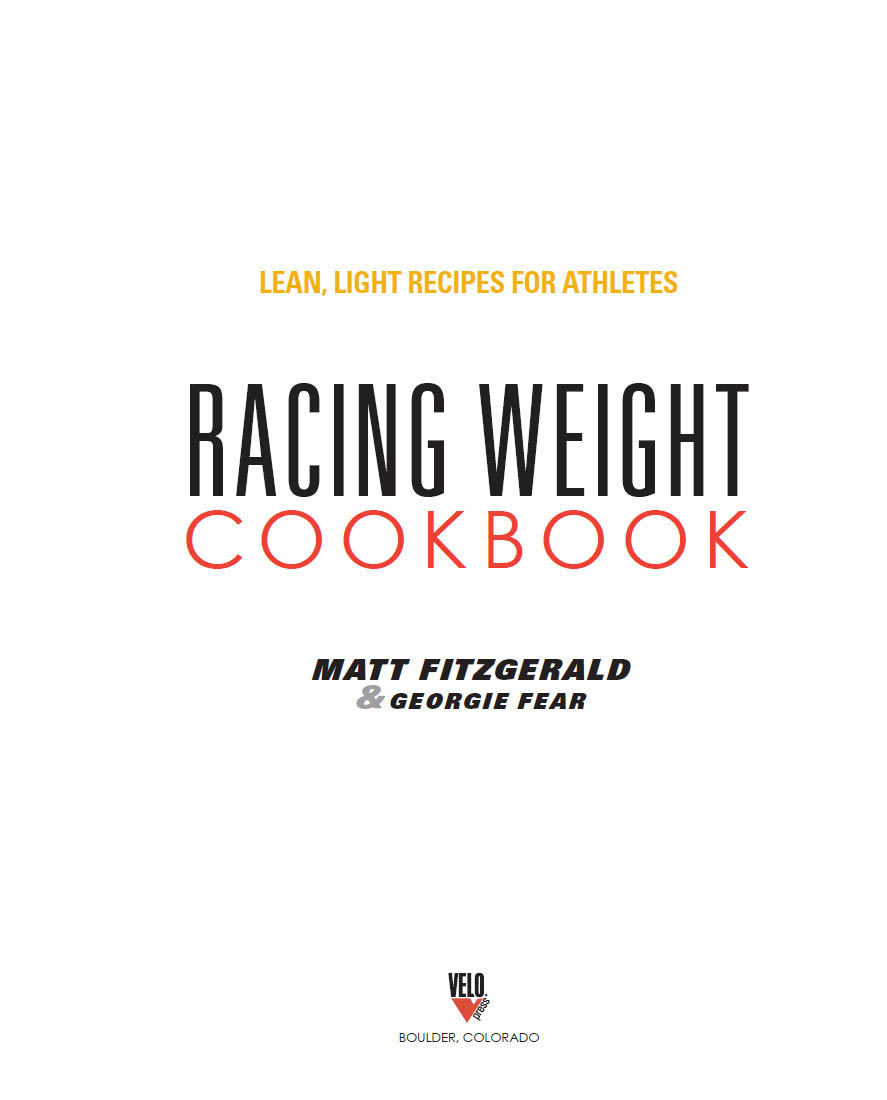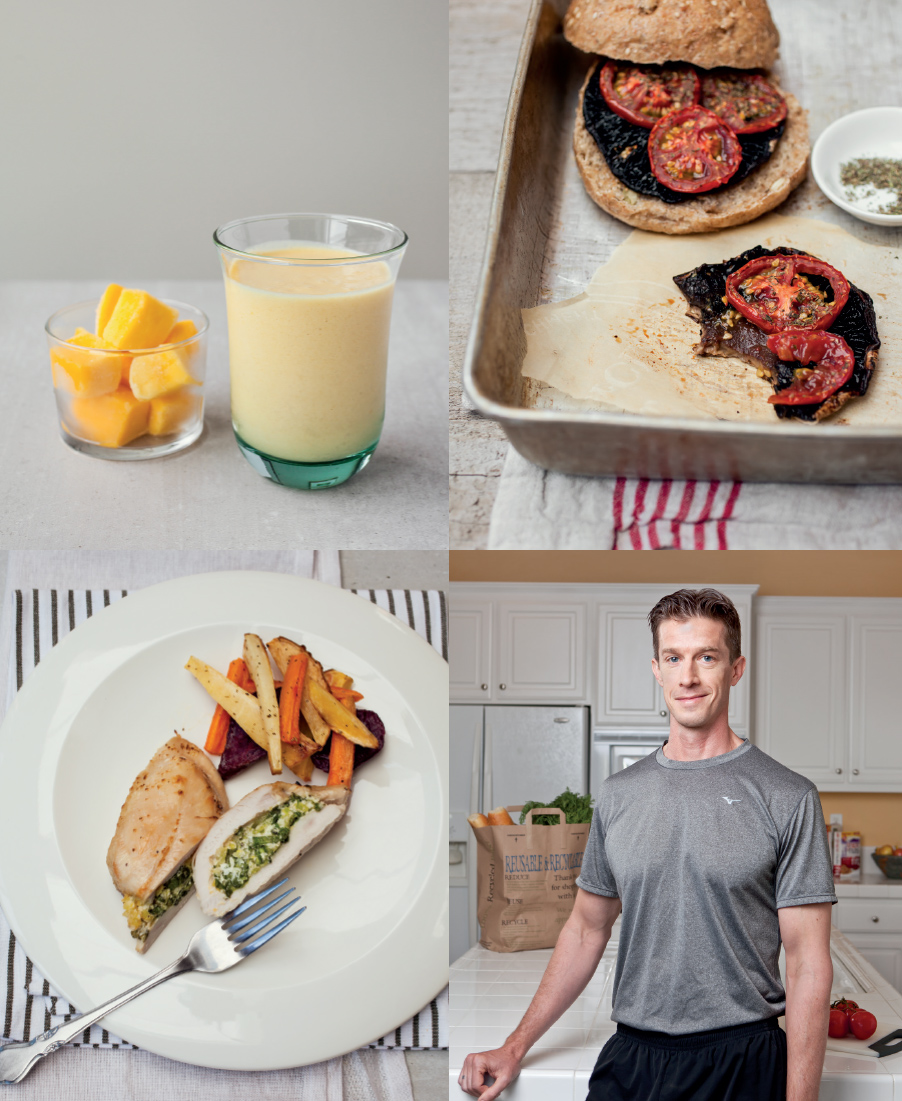This is not a typical cookbook. It is a cookbook for endurance athletes, who are as different from other categories of eaters as bicycle seats are different from recliners. Cyclists, cross-country skiers, rowers, runners, swimmers, and triathletes have special dietary goals and nutritional needs that are not shared by their nonathlete friends. These unique dietary requirementsespecially as they relate to the goal of performance weight managementare thoroughly addressed in my book Racing Weight: How to Get Lean for Peak Performance. This cookbook presents original recipes that are consistent with the guidelines offered in that book. Of course, these recipes may also serve as healthy meals for any nonathletes in your household, but they were created especially for athletes like you.
Most cookbooks are written for people who have a preexisting interest in cooking. The Racing Weight Cookbook does not presume such an interest because it is intended to enable all endurance athletes, regardless of cooking experience, to feed themselves in a way that conforms to the Racing Weight system. While there are plenty of recipes in the following pages that will appeal to experienced cooks, there are also many that require no special kitchen skills. My highest priority in putting together this book was to ensure that it was useful even to those athletes who generally would rather wash up after dinner than prepare it.
In this regard, my own limited cooking abilities were an advantage. Never drawn to the kitchen, I managed to put off learning how to cook until after I graduated from college. I hadnt been at it very long when I developed persistent stomach pains. Eventually I deduced that the discomfort was caused by pasta sauce. It wasnt that my stomach was especially sensitive to the acids in tomatoes. The problem, rather, was that I was eating the same meal every single night: spaghetti with ground turkey mixed into Rag Chunky Gardenstyle Primavera Sauce and a giant stalk of steamed broccoli on the side.
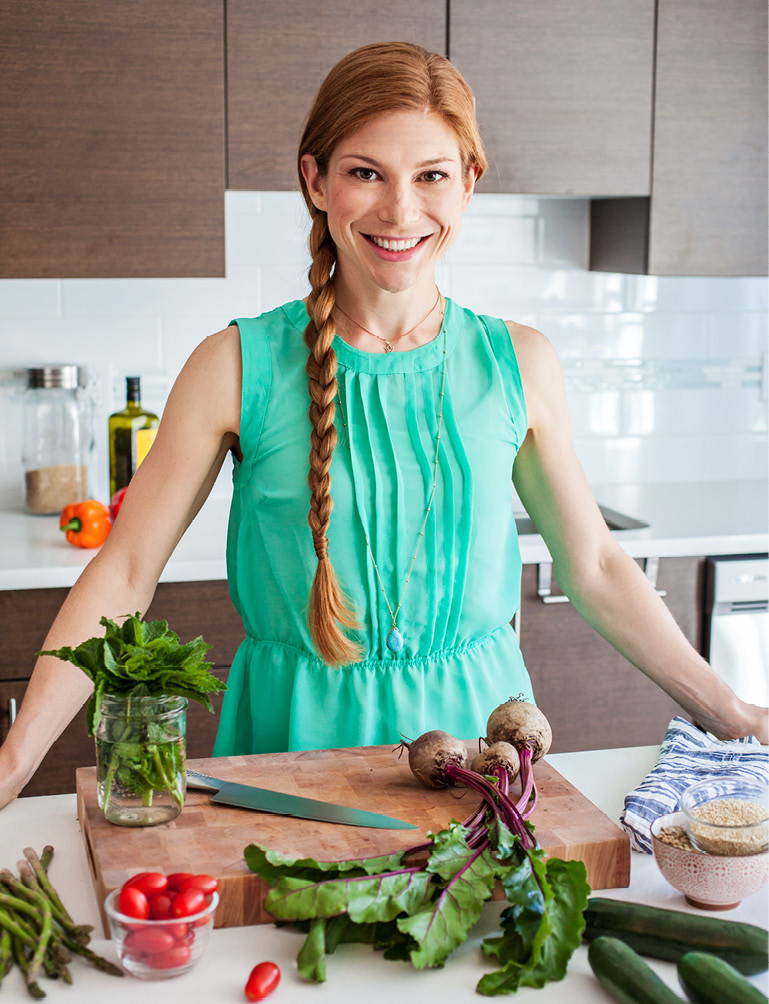
Georgie Fear
I realized then that in order to be truly healthy, I needed to break out of my comfort zone and learn how to prepare some other kinds of meals. I did not exactly become Wolfgang Puck, but I very slowly added simple meals to my repertoire. I took shortcuts at every opportunity, such as buying canned soups and adding veggies to them instead of making my own soups from scratch. The one thing I refused to do was lower my nutritional standards. Through this combination of laziness and high standards I learned lots of little tricks that enabled me to fuel my body for maximum health and performance without spending more time than I could bear stirring the contents of saucepans. All of the tricks and shortcuts Ive picked up over the years are shared in the Racing Weight Cookbook. If you can use a can opener, you can use this resource to take control of your diet and reach your optimal racing weight.
Having said this, I hasten to add that cooking is like endurance training (and most other pursuits): The more you put into it, the more you get out of it. Many years ago I had the good fortune to marry a woman whose enthusiasm for cooking has proved infectious. Together we eat a wide variety of enjoyable, healthy meals. This experience has taught me that every endurance athlete should be encouraged to go beyond the basics and learn how to prepare some meals that offer as much pleasure as they do nutrition.
Thats why I did not write this book alone. Georgie Fear is an outstanding cook who creates original meal recipes almost daily for her own enjoyment and to share with the clients she serves as a dietitian and nutrition coach. She is also a fitness fanatic (and a former triathlete and ultrarunner) who understands the special dietary needs of endurance athletes. Ive known and admired Georgie for years, and when it came time to choose a collaborator for this book, my list of candidates had only one name on it: hers. All of these recipes were tested and perfected in her kitchen. Thanks to her contributions, the Racing Weight Cookbook has as much to offer foodies like her as five-minute cooks like me.
If youre like most people (including most endurance athletes), one of these three phrases accurately describes your relationship with cooking:
- I dont cook.
- I have some cooking experience.
- I love to cook!
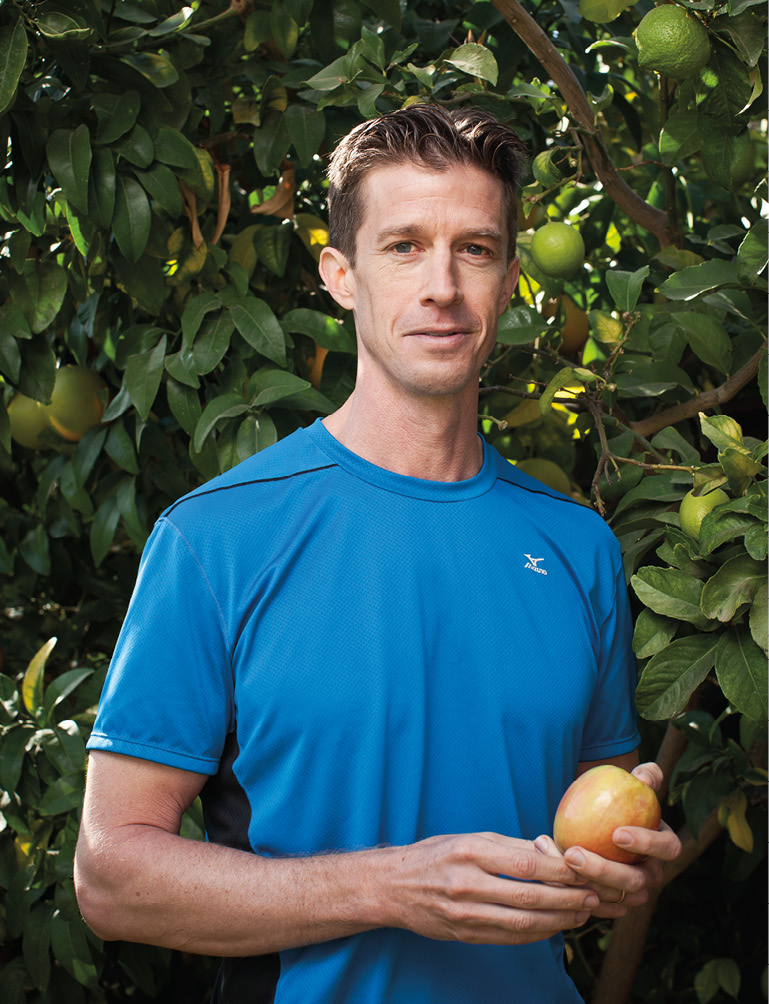
Matt Fitzgerald
The recipes in this book are categorized in three levels that align with these self-descriptions. Level 1 recipes are so simple that even folks who claim they dont cook can put them together without acquiring new skills. Level 2 recipes are a bit more involved but still fall well within the comfort zone of those who have followed basic recipes before. Level 3 recipes are also simple enough to be followed by anyone who can read English but entail a few more steps and some less common ingredients that may be familiar mainly to those who enjoy spending time in the kitchen.
If you havent cooked before, start with the Level 1 recipes. You can practice the Racing Weight system successfully with these meals alone. Once youve gained a little confidence, you can advance to Level 2 and ultimately to Level 3 recipes. If youre already a little more comfortable in the kitchen, start by drawing from both the Level 1 and Level 2 recipes. You will be ready to advance to Level 3 in no time. And if youre an experienced cook, there are no limitations on which recipes you can use to adhere to the Racing Weight system. Just dont assume that the Level 1 recipes are too basic for you. These meals are no less wholesome than the more sophisticated ones, and even the most avid cook needs a break sometimes.
///
If anyone had told me 20 years ago, when I was fighting stomach pain from eating too much pasta sauce, that one day I would coauthor a cookbook, I would have thought I was hallucinating. Then again, this is not your typical cookbook. Its just the sort of cookbook that I would use (and will use) myself as a runner and triathlete who loves to eat; does not have a lot of time and energy to cook; and is always looking to get leaner, lighter, and faster. I believe that you will discover this to be the perfect cooking resource for you too.
So what are we waiting for? Lets eat!
Matt Fitzgerald
AN INTRODUCTION TO THE RACING WEIGHT PROGRAM
Every endurance athlete has an ideal racing weight. This is defined as the combination of body weight and body fat percentage at which an athlete performs best. Typically athletes perform best when they carry just a little more body fat than the minimum that is required to sustain good health. Thats because excess body fat slows athletes down by increasing gravitational resistance, interfering with heat dissipation, and hindering performance in other ways.
Many endurance athletes struggle to reach their racing weight for more or less the same reasons that nonathletes struggle to reach a healthy body weight (for instance, poor food choices and overeating). While the reasons may be the same, the solutions are quite different. Some pursue their racing weight by following popular diets that dont supply enough energy to fuel hard training. I created the Racing Weight program to help athletes reach their racing weight the right way.

